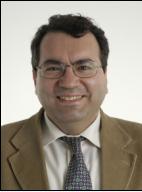Phase and TV Based Convex Sets for Blind Deconvolution Problems

Speaker: A. Enis Cetin
Affiliation: Bilkent University, Ankara, Turkey
Abstract:
In this talk, two closed and convex sets for blind deconvolution problem will be presented. Most blurring functions in microscopy are circularly symmetric with respect to the origin. Therefore, they do not modify the phase of the Fourier transform (FT) of the original image. As a result, blurred image and the original image have the same FT phase. Therefore, the set of images with a prescribed FT phase can be used as a constraint set in blind deconvolution problems. Another convex set that can be used during the image reconstruction process is the Epigraph Set of Total Variation (ESTV) function. This set does not need a prescribed upper bound on the total variation of the image. The upper bound is automatically adjusted according to the current image of the iterative algorithm. ESTV regularizes the deconvolution process. Both sets can be also used as a part of any blind deconvolution or ordinary deconvolution algorithms. If time permits, a deconvolution example from MRI imaging will be also presented.
Biography:
A. Enis Cetin is Professor of Electrical Engineering at Bilkent University, Ankara, Turkey. Currently, he is a visiting professor at UC San Diego on sabbatical leave from Bilkent. His team developed a predictive split VQ for Line Spectrum Frequency (LSF) vectors in early 1990’s. This approach is adopted by the speech coding standard G.729 and the current GSM speech encodere. He has been involved in two start-up companies (Visioprime and Grandeye) over the last twelve years. He was a member of the founding team of the wide-angle camera design company, Grandeye (www.oncamgrandeye.com) which has now branches in Turkey, India, the US and the UK. His group also developed video based wildfire detection systems, which are installed in more than 100 locations in Turkey, the US, Singapore and Cyprus. He has five US patents. He got his Ph.D. from University of Pennsylvania in 1987. He was Assistant Professor at University of Toronto before joining Bilkent in 1989. He was elected Fellow of IEEE for contributions to signal and image recovery in 2010. He has been an Assoc. Editor of IEEE Signal Processing Magazine, IEEE Trans. on Image Processing and EURASIP journals. He is currently the Editor-in-Chief of Signal, Image and Video Processing, Springer.
For more information, contact Prof. Aydogan Ozcan (Ozcan@ucla.edu)
Date/Time:
Date(s) - Aug 22, 2016
3:00 pm - 4:00 pm
Location:
E-IV Tesla Room #53-125
420 Westwood Plaza - 5th Flr., Los Angeles CA 90095
